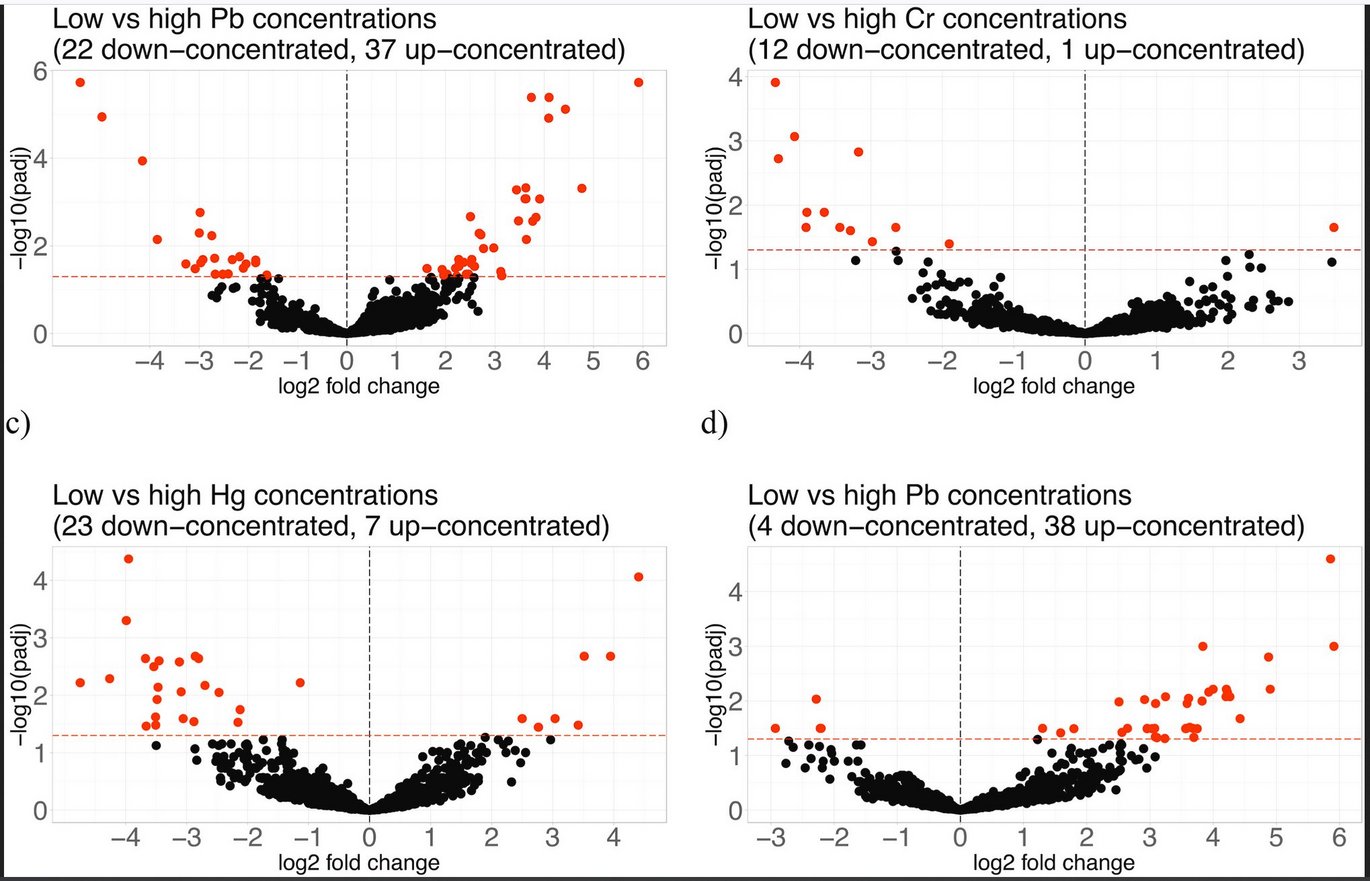The metabolome of pink-footed goose: Heavy metals and lipid metabolism
New publication by Jensen M, Poulsen R, Langebæk R, Jenssen BM, Moe J, Ciesielski TM et al.

Abstract:
Wildlife is exposed to mixtures of environmental contaminants that affect health and population dynamics. Exposure to toxic heavy metals originating from anthropogenic sources may exert metabolic effects at even low exposure concentrations. Here we investigated the relationships between heavy metal exposure and metabolic changes in the migratory bird pink-footed goose (Anser brachyrhynchus). We used blood pellet and blood plasma samples from 27 free-ranging pink-footed geese to study heavy metal (Cd, Cr, Hg, and Pb) exposure in relation to the metabolome. The results relate blood concentrations of Cd (range: 0.218–1.09 ng/g), Cr (range: 0.299–5.60 ng/g), and Hg (range: 2.63–6.00 ng/g) to signal areas of fatty acids and other lipids, while no correlations were identified for Pb level (range: 21.0–64.2 ng/g) exposure. Lipid signal areas were negatively associated with concentrations of Cr and positively associated with Hg exposure (both p < 0.05). α-Linolenic acid and 9-oxononanoic acid were negatively correlated to Cr exposure (both p < 0.05) and were related in the α-linolenic acid metabolism pathway. Compared to known thresholds for aviary species, the heavy metal concentrations are below levels of toxicity, which may explain the low number of metabolites that significantly change. Nevertheless, the heavy metal exposure is still correlated to changes in the lipid metabolism that may reduce migrating birds’ breeding success and increase mortality for an exposed part of the population.
